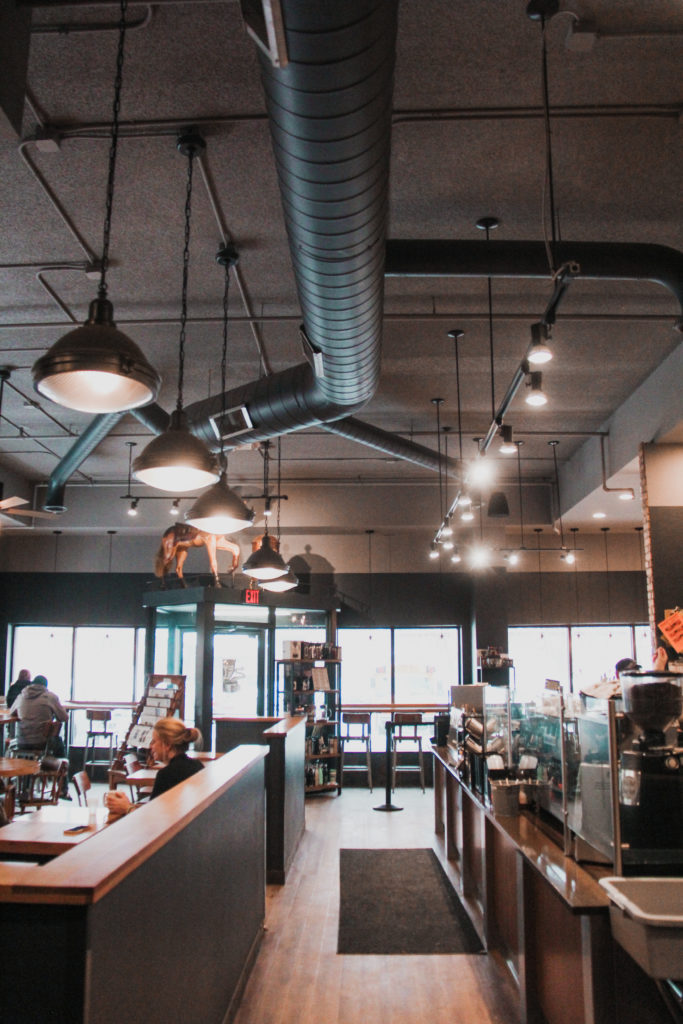
Whilst the drinks themselves aren’t the leading factor behind people’s choice, that doesn’t mean Java has neglected them. Java isn’t losing sight of where it all began, though. Java became the place to hang out with friends, and as a result of that, Java has grown.” Java House has also introduced kiosks and express stores, to increase their diversity through the market, but it is their meeting spaces that set them apart and introduced the coffee house trend in Kenya in the way it exists today. “People like to come in, they like to sit down, they like to talk and have a nice environment to meet in.

As Paul shared with us, market research tends to come back with the quality of coffee ranking third or fourth amongst people’s reasons to choose a particular venue, with the leading factors instead being its atmosphere, its location and its customer service. It may sound surprising, but the drinks are not the primary reason that people attend a coffee venue. This period of time also saw Java open its sibling brands, Planet Yoghurt, a healthy frozen yoghurt store, and 360 Degrees Pizza, a casual dining restaurant.Īs for Java House itself, the venue evolved over time from exclusively serving coffee to instead being a coffee-led casual dining experience, and a heavy emphasis is placed on the venue and the experience of visiting it. After five years in business, it was taken over by a private equity firm, which led to a far more rapid expansion for Java. The company’s aim was to introduce and spread this culture through the country. To answer this need, the first Java House was opened in August 1999, in Adam’s Arcade, Nairobi, followed by a handful of others over the next few years. The gourmet coffee culture hadn’t yet become a widespread phenomenon in the country you could buy the beverage, but that emphasis on specialist preparation and accompanying social space wasn’t there. Java House was created when its founders, Kevin Ashley and Jon Wag, couldn’t find a social space to relax and drink coffee in like this in Kenya. In the 17 th and 18 th centuries in Europe, coffeehouses were associated with intellectualism and the gathering of artists, and they hold a similar connotation now, forming popular spots for people to gather for social and business reasons alike, or to sit with a laptop working on that article or novel. Whilst coffee culture as we know it feels as though it’s been taking shape for the past few decades, the social tradition of gathering in coffeehouses can actually be traced back to Turkey in the 14th century. To celebrate its 20-year anniversary, we spoke with Paul Smith, the CEO of Java House, about how the top East African company has helped to shape the market and the face of coffee in Kenya. America, Europe, Australia, the Middle East – this culture is popular from nation to nation, and Kenya is no different. We can create a class in Java using the class keyword.Coffee culture is a phenomenon the world over.

Since many houses can be made from the same description, we can create many objects from a class. Based on these descriptions we build the house.

It contains all the details about the floors, doors, windows, etc. We can think of the class as a sketch (prototype) of a house. Before we create an object, we first need to define the class. It hasīefore we learn about objects, let's first know about classes in Java.Ī class is a blueprint for the object.

The core concept of the object-oriented approach is to break complex problems into smaller objects.Īn object is any entity that has a state and behavior. Java is an object-oriented programming language.


 0 kommentar(er)
0 kommentar(er)
